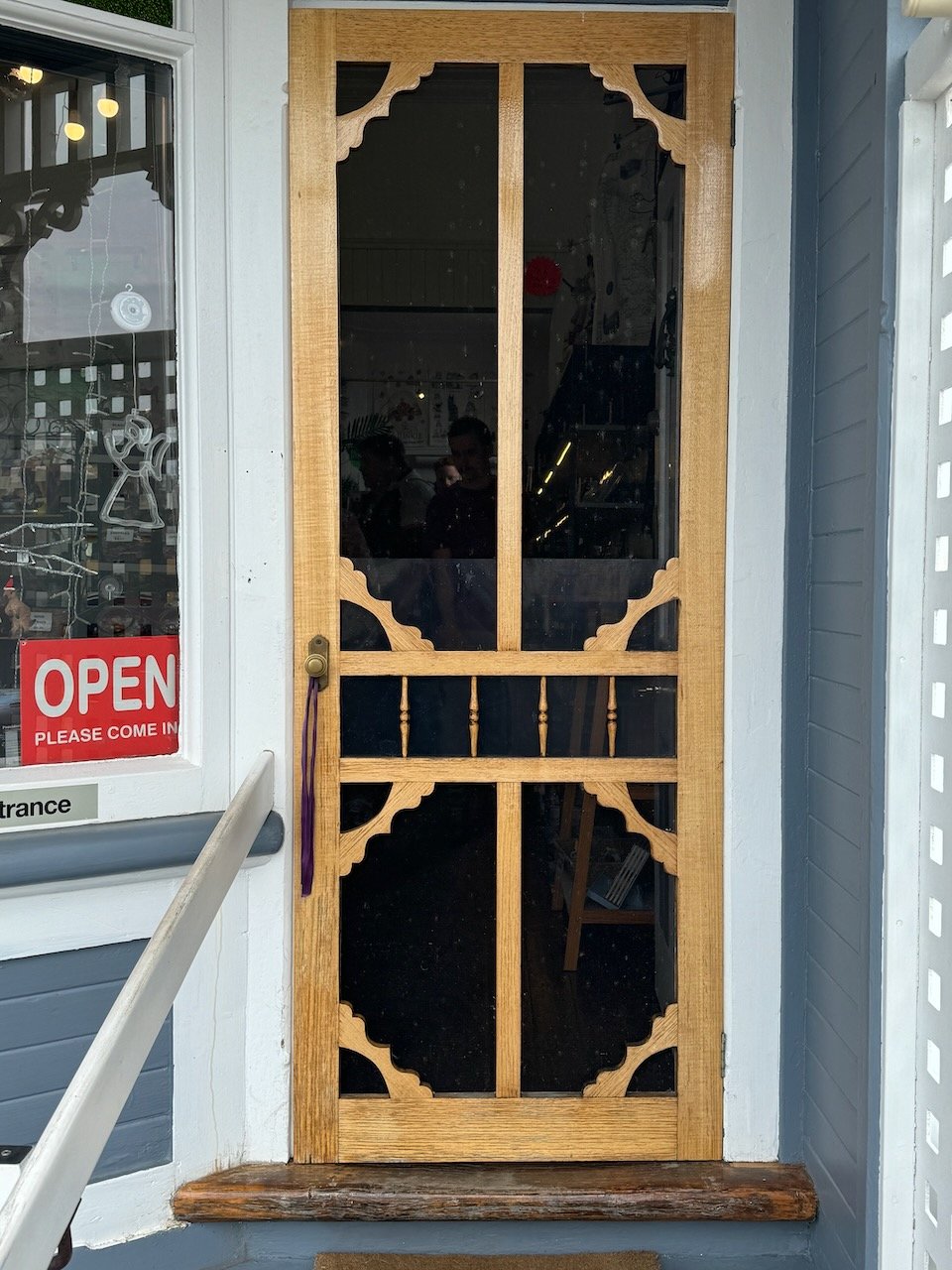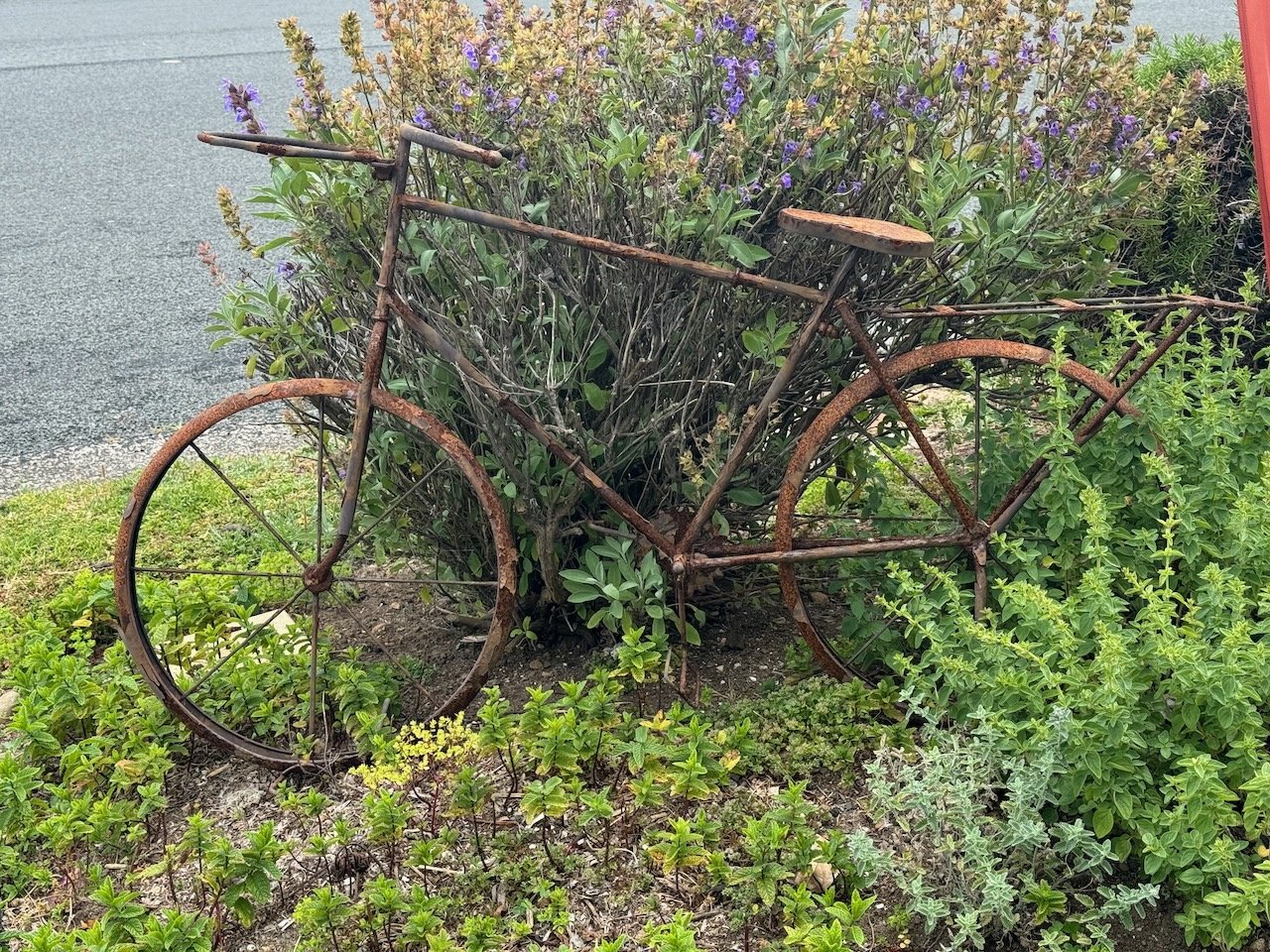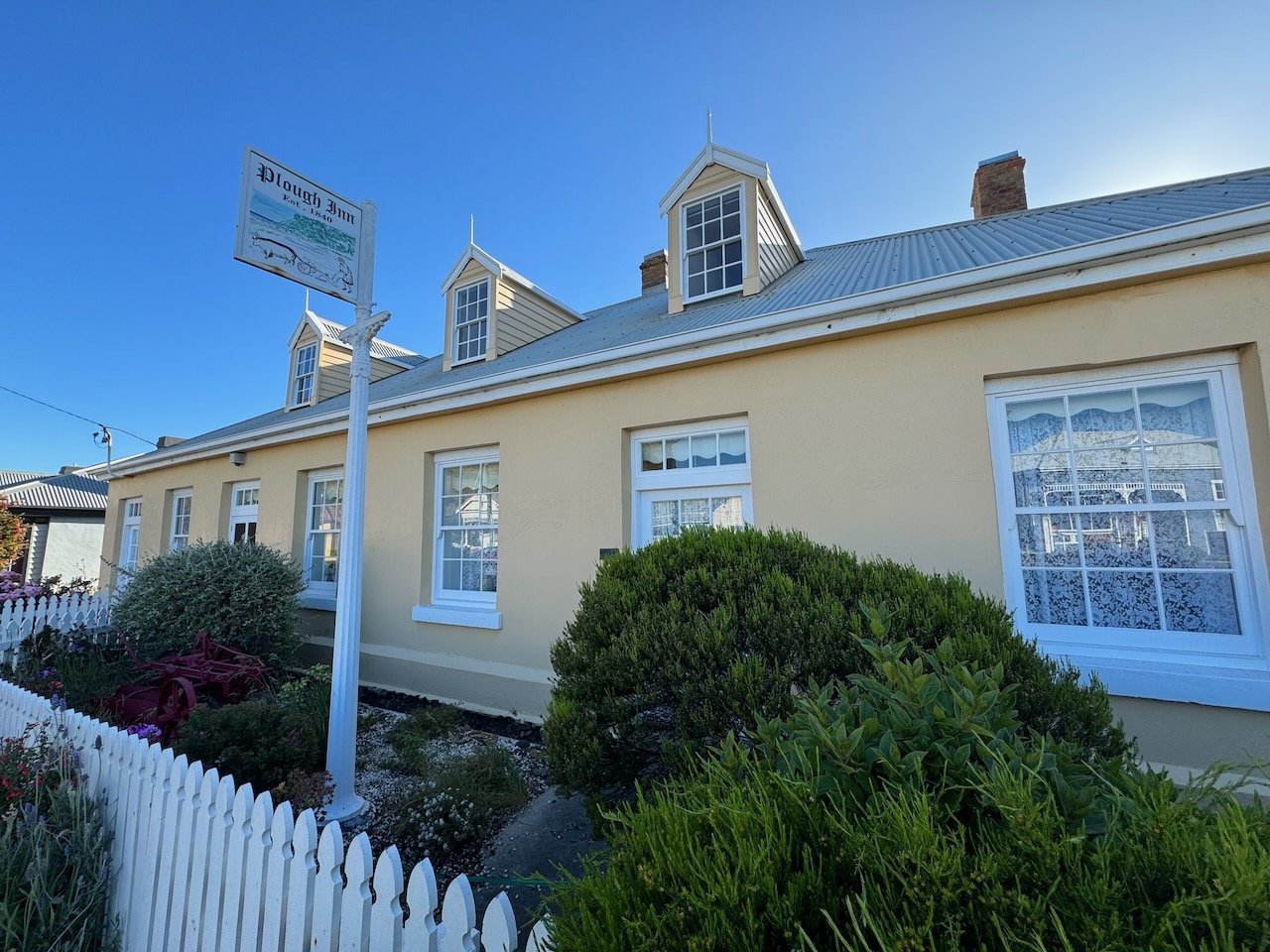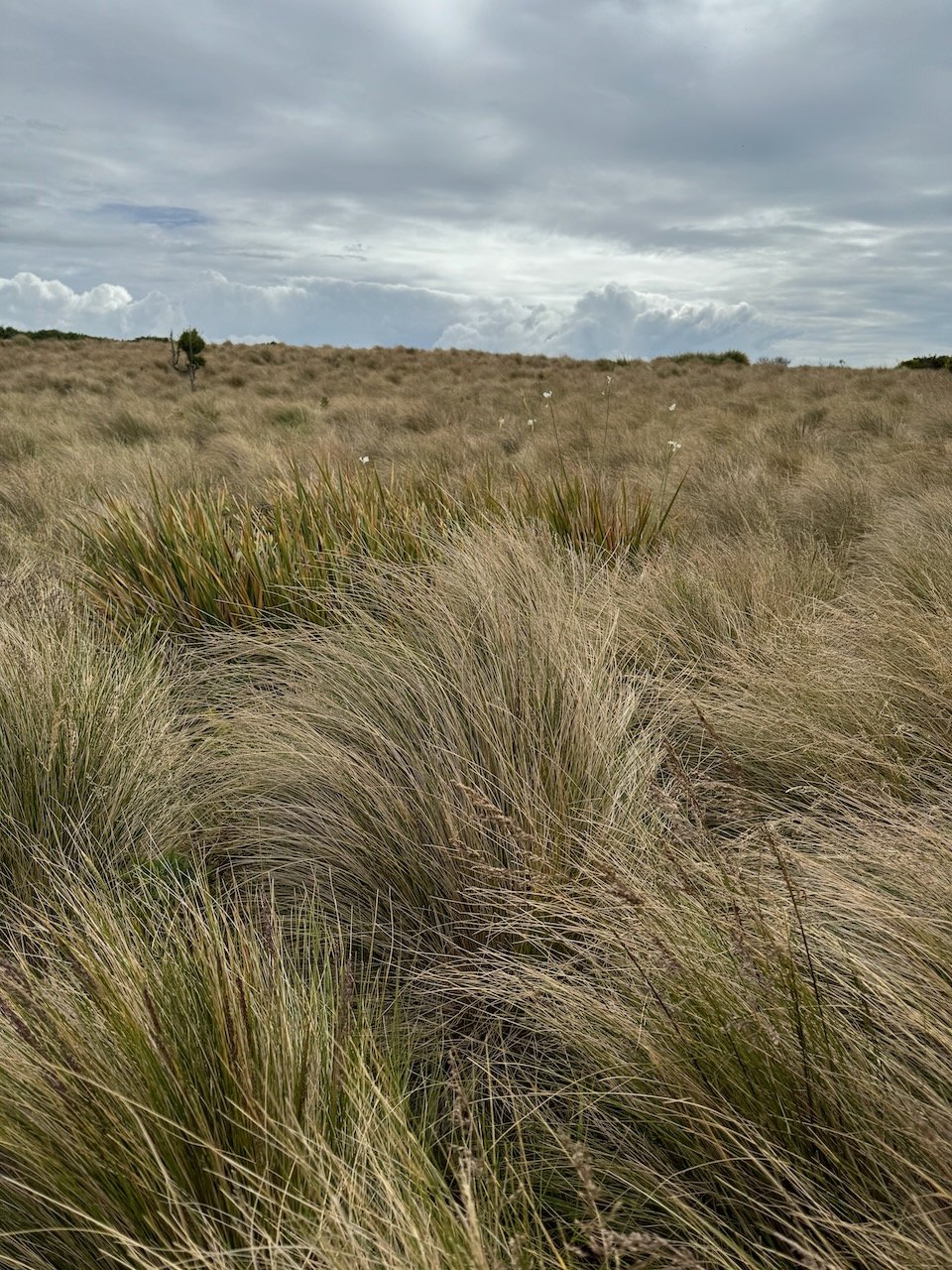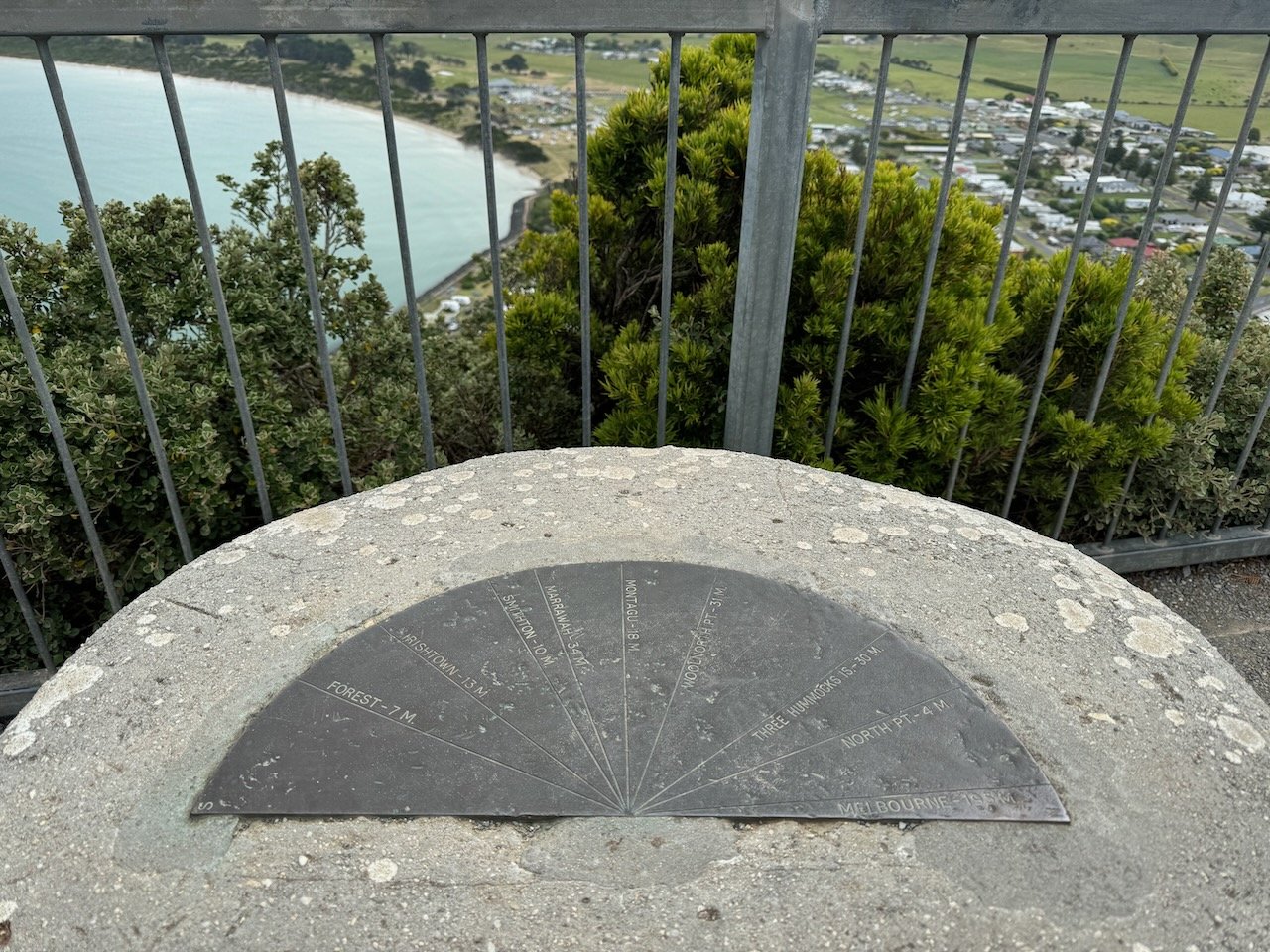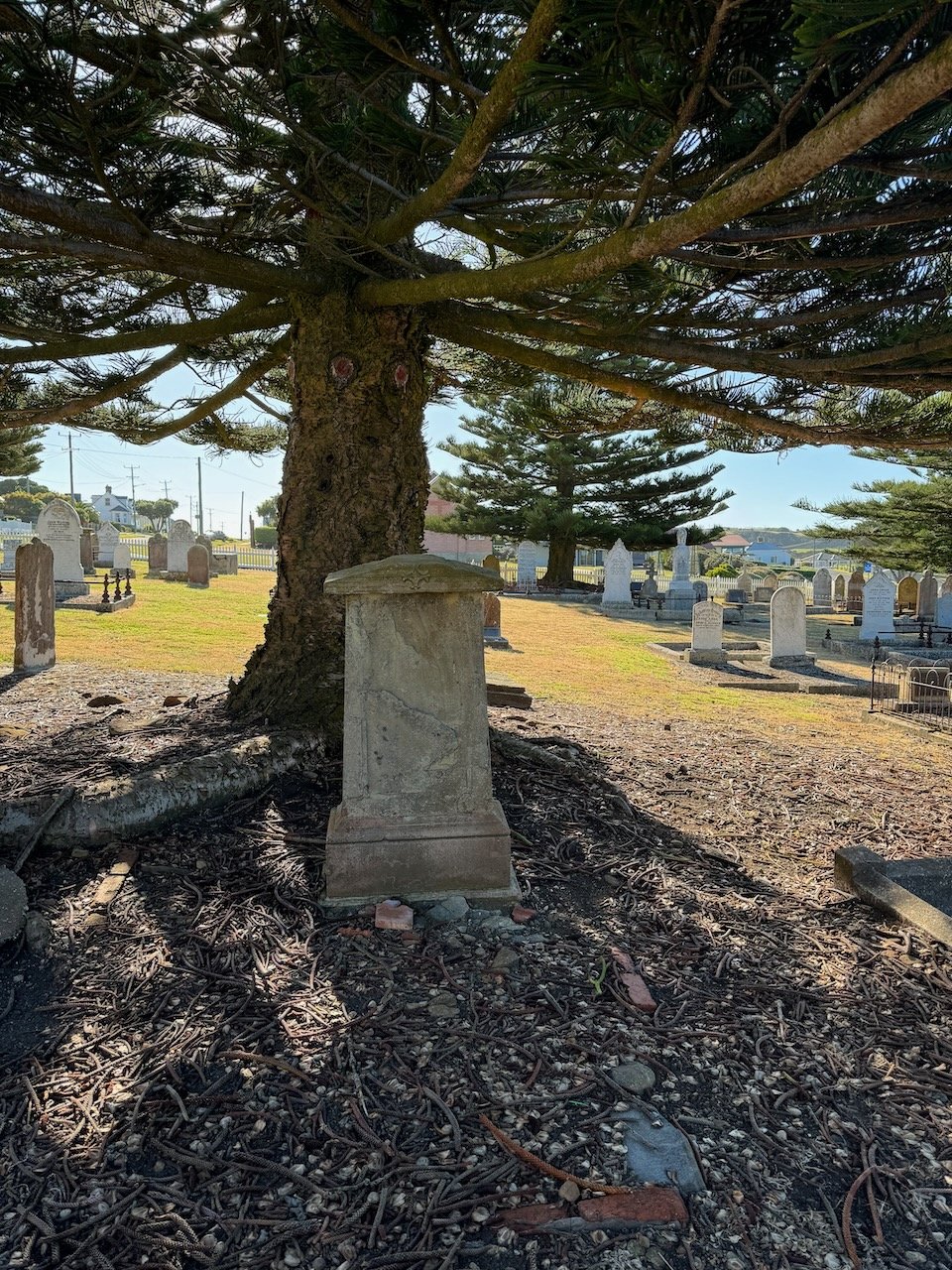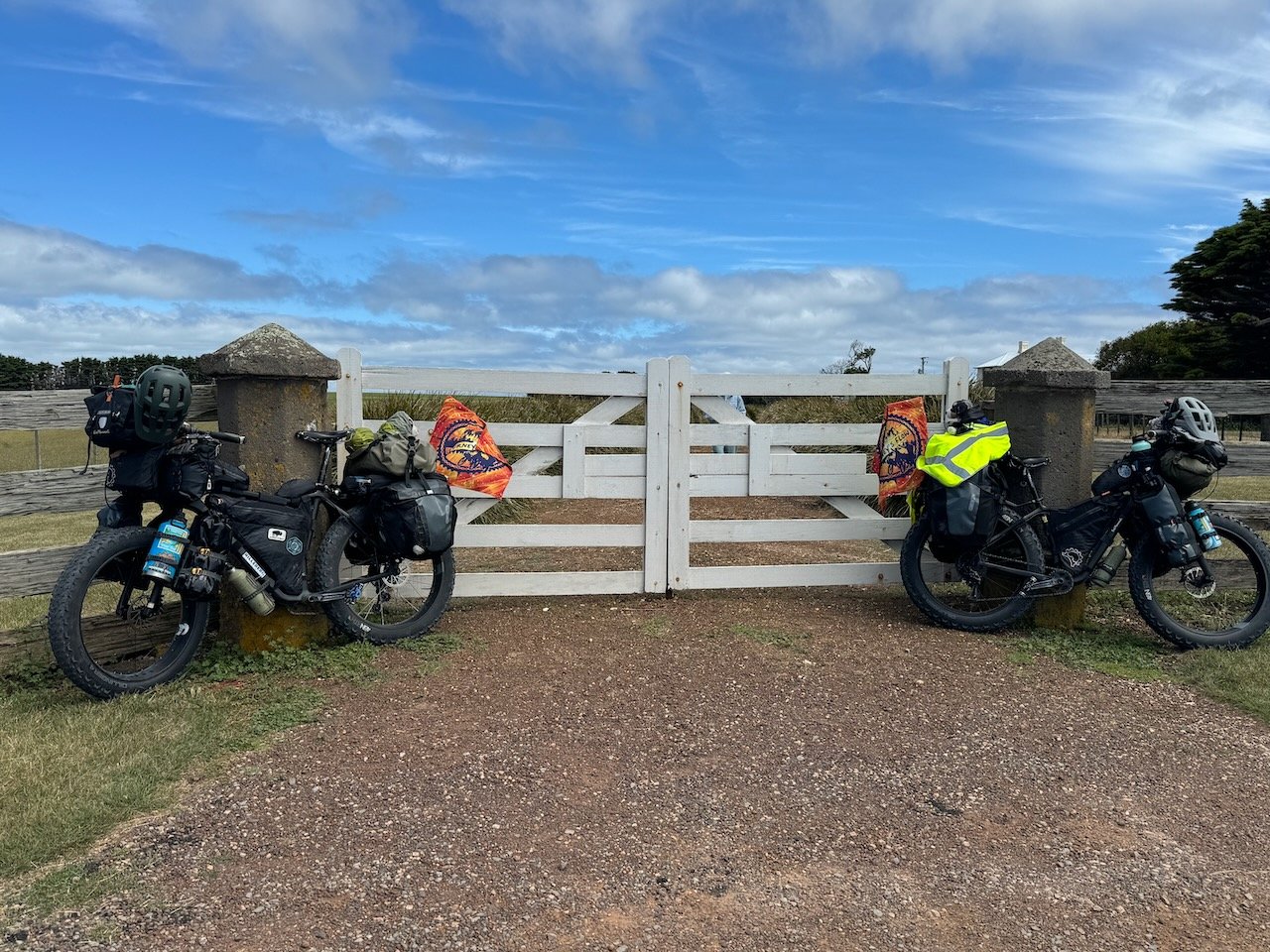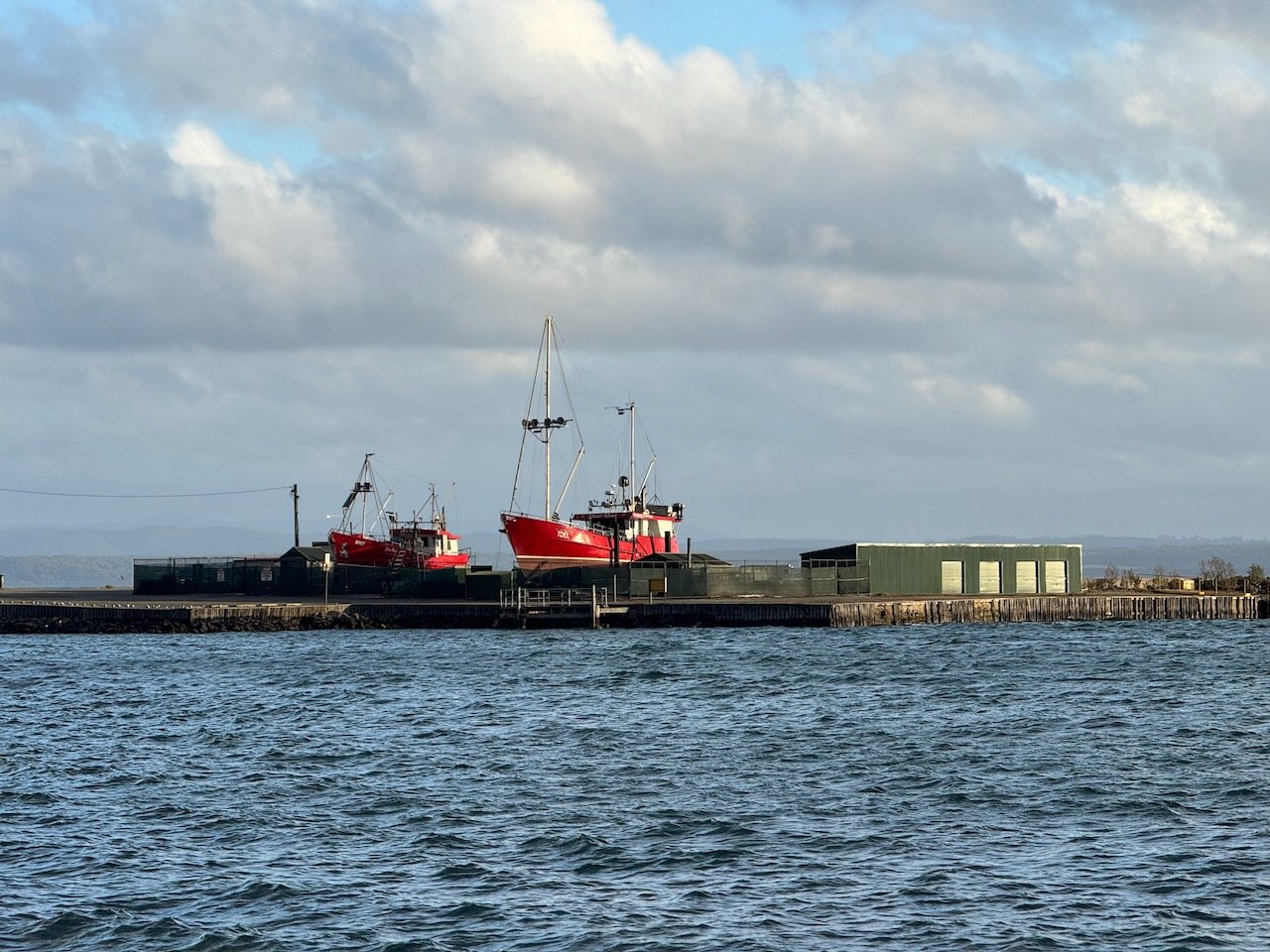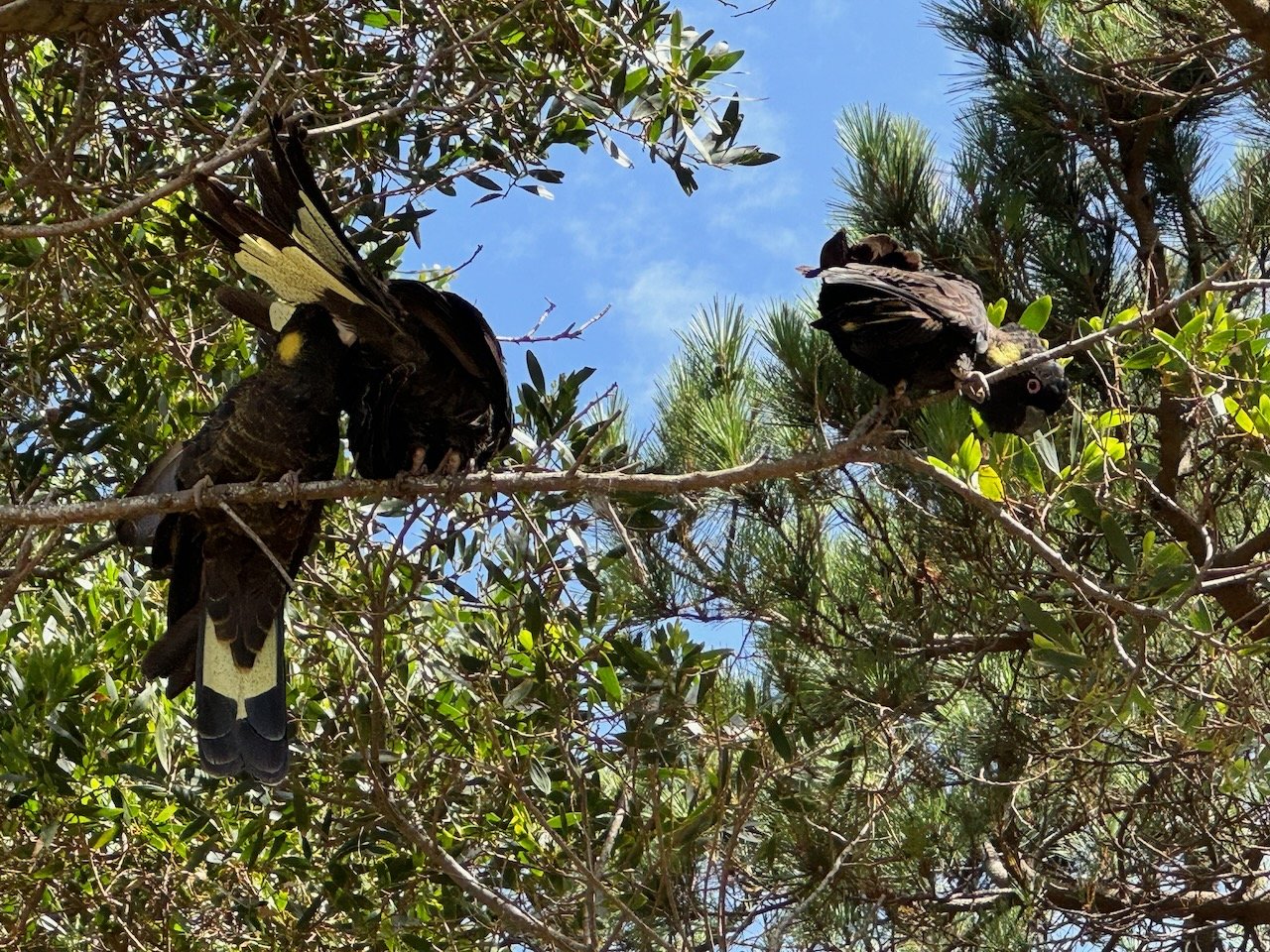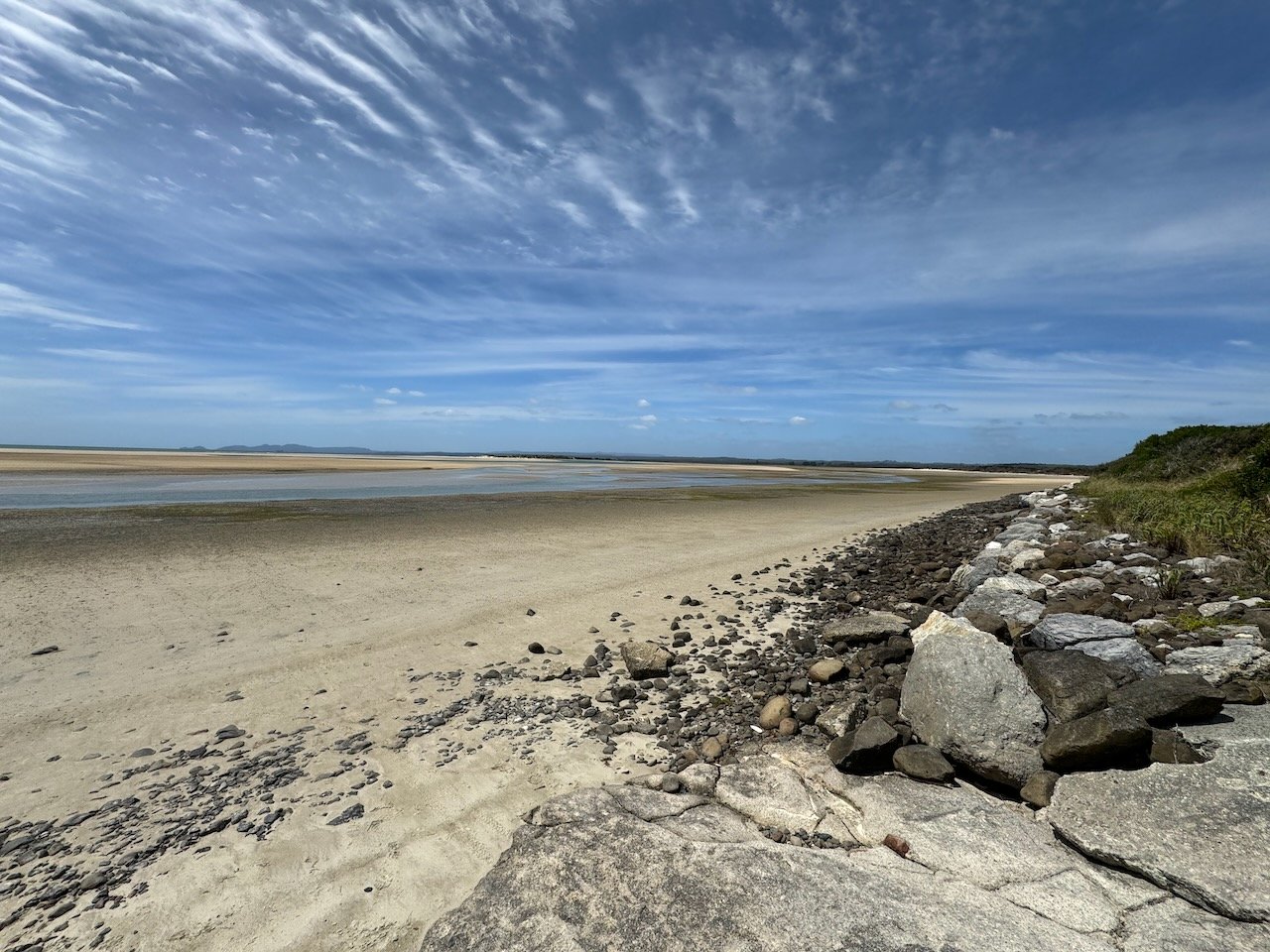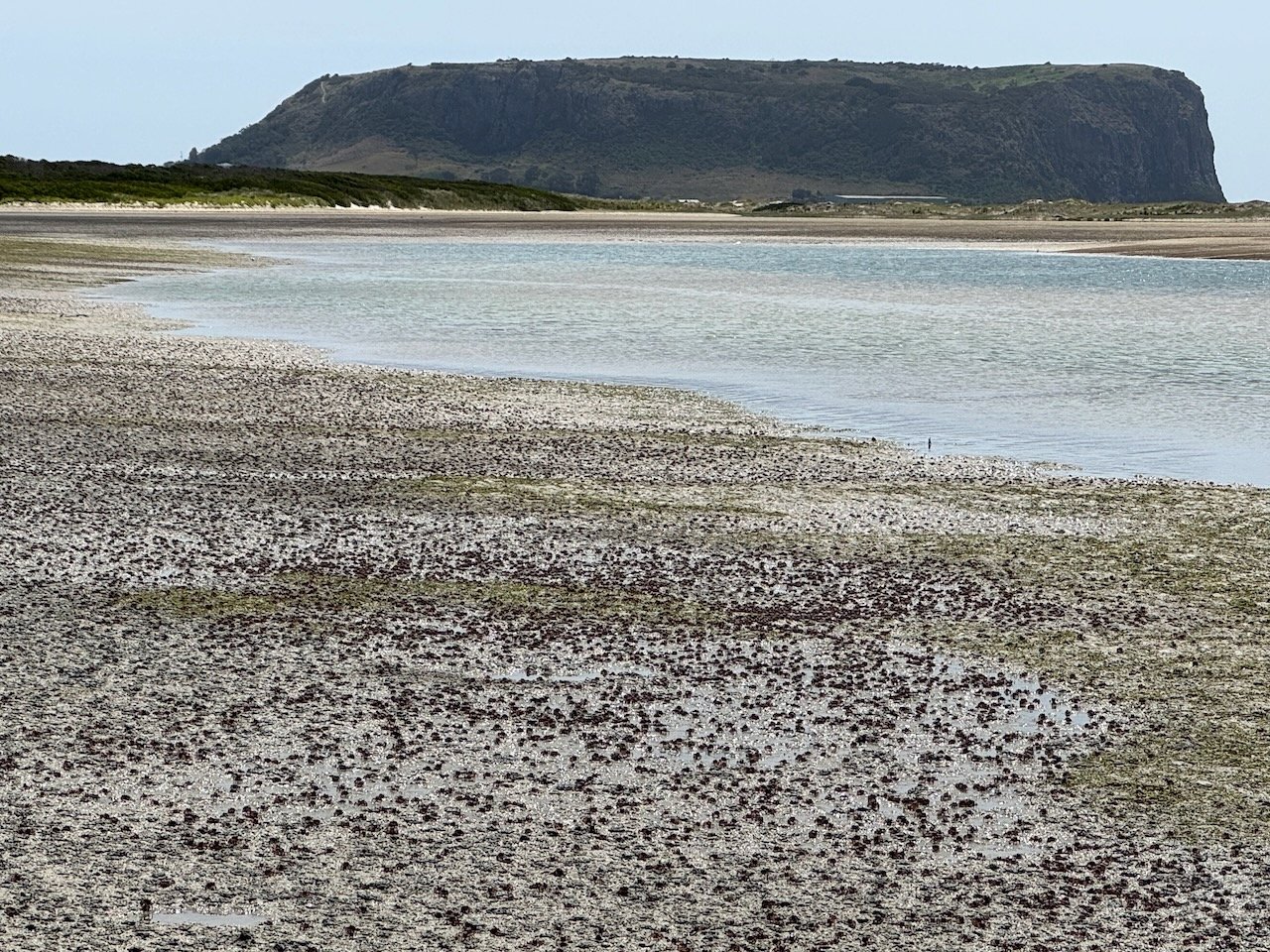Tasmania - Uncovering Stanley
December 2-6, #10
From the time we arrived in Devonport, people told us about climbing the Nut in Stanley. And from our host in Boat Harbour, we learned more about the history of the area peaking our interest in exploring the cemetery and the Highfield House.
The first day we walked the main street lined with historic buildings from the 18th century (recently a Hollywood location for the movie, The Light Between Oceans) and then wound our way up to the infamous Nut.
Climbing the Nut
It was no surprise that the walking track went straight up in a zig-zag pattern, probably at a 20% grade underneath the tram - at least it was short. On top, the walking path circumnavigated the edges with look-outs at every corner across the Bass Strait, Rocky Cape, and Stanley below. The Nut is a volcanic plug, formally named the Circular Head, originally a forested area, it is now mostly a grass land (after logging to build the town) and home to some native and non-native plants and animals (after European occupation). We caught glimpses of a skink amongst the many rabbit holes, a couple kestrels hovering just off the cliff and a fuzzy Oak Eggar (moth found in Britain/Ireland).
To reward ourselves for climbing the Nut, mid-way through we found a bench to enjoy a celebratory Stout with our British baked goods - a custard tart and apple turnover. On our way back through town, we found ourselves quite easily slipping into tourist-mode, stopping at a cafe overlooking the bay to sample some Tasmanian wine, followed by a visit to the steam-punk style wine bar for an artisan prawn and mango pizza on the patio with a four-legged local catching some afternoon rays.
Fairy Penguin Serenade
The next day we went back to town to check out the cemetery, where many of the European pioneers of the area were laid out to rest in earthen beds of concrete.
Directly below the cemetery, along the rocky shoreline, is a Fairy Penguin nesting site with a viewing platform. Just before dusk, we returned to find the platform full of people waiting in silence for the penguins to arrive. Rather than join the crowd, we decided to stand just outside the gate to the platform, debating whether to hang around since there was no sign of the penguins.
As dusk came and went, everyone started leaving the platform. We continued hanging out by the gate and a short while later, little penguins started waddling up just behind the fence, congregating 2-3 at a time, before hopping through the railings, cautiously making their way across the carpark driveway, up across the road and into the church yard hedges. Then we noticed other penguins popping out of the bush on the other side of the gate, parading up into the cemetery to join the pademelons. Within a few more minutes the area surrounding us was filled with Penguin chatter. We walked back up along the cemetery fence to see where they were heading, and found them wandering the aisle ways and standing along the headstones chattering away, adding an eerie yet comical element to a dark and foreboding setting.
On our way back through town, we met up with one of the cafe owners that told us the little penguins would be all along the beach front walkway back at the caravan park as well. We stopped and watched several pairs of penguins “toddling” back and forth next to the rocks before heading off to bed. During the night I realized what I had mistaken for “bird” noise the night before was actually the penguins making their way through the caravan park. I surmised - those that watch over the nest during the day must be up for a midnight wander to stretch their legs before heading out to sea to fish the next day.
Highfield House
Our last stop in Stanley was a visit to Highfield House, headquarters for the Van Diemen’s Land Company, the first European settlement here. And for us, our first immersion into the history of Tasmania and the tragic end to its peoples.
In our wanderings through the back country, I often find myself wondering what it must have been like to explore such a vast wild landscape centuries ago and how different it might be, if there had been no desire to conquer, but only to explore and embrace - how different and richer our world might be today.
After a sobering walk through the buildings on the property, we pushed on through the roaring wind, up to a whimsical tourist spot and a landmark for the first flight crossing the Bass Strait in 1919.
We had packed up, planning to push-on to Smithton that afternoon. Instead we spent most of the day exploring and realized departing the next morning we could avoid another late arrival. So we returned to the caravan park and booked a tent site just across from the beach walkway to spend one more night serenaded by the little penguins.
Beach Cruise
The next morning we decided to take the paved beachfront track and see how far we could get before we had to return to the road with no shoulder. During our stay, we had spent only a few minutes out on the bay and regretted not riding the beach. Although we were unsure how many access points there were after the walking track ended, we decided to risk having to back-track, and made our way down to see how far we could ride the beach.
Even with our loaded bikes we were able to cruise along enjoying the expansive views of surf, sand and seashells scattered along the shoreline. A short ways up the beach split, extending out into the sea and arching inland. The sand quickly turned to sponge, forcing us to push-around the corner until we could find hard-pack again and start searching for our exit point. Within a few pedal strokes, we could see up ahead the sand was covered in rust-colored swaths. What we didn’t realize until we were in their midst was the sand had come alive with a million little crabs, less than an inch wide, all heading towards the surf with the changing tide. We quickly retreated to the outer reaches and in a short distance found our exit point, only to return with our cameras to capture the march of the little crabs, a remarkable spectacle.
Turning back onto the highway, we were hopeful that in a few miles another back road route would take us into Smithton. At the turnoff we were greeted by the infamous “No Through Road” sign and wondered how adventurous the next 7km might be, if we continued. However, within the first kilometer, the road turned into a driveway and the way ahead was closed off.
Realizing we had been “googled” into following a fictitious route, we were about to give up, when the owner appeared from behind the outbuilding on his ATV and greeted us warmly. Apparently, we were not the first to stand in his driveway looking puzzled, while staring at our phones. He told us, they had closed off the road not long after buying the property, as the road that was once the original road into Smithton, had fallen into disrepair - full of dense bush and bogs. Apparently too many people had got themselves stranded, and they did not want to assume the risk any longer. Besides, he told us the snakes are coming out to sun and the blue-tongued lizards were crawling about as well. Advisably, not a place we would want to be on push bikes in our attire was his summation.
We kindly thanked him, headed back out to the highway and found our next caravan park along the Duck River in Smithton with “no dramas”.











